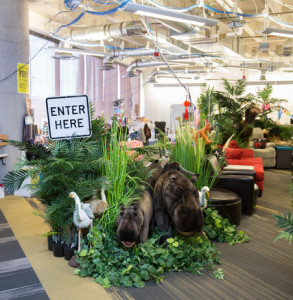Have you ever been at a corporate off-site or other workshop/offering where the result of the initiative fell flat? The intent was good; but there were no new meaningful insights. It was scheduled rather than organic. Our brains had time to predict the future, and the potential for novelty disappeared. Transplanting the same mix of people to a different location, even an exotic one, then dropping them into a “new” conference room usually doesn’t work.
No, new insights usually only come from new people, new environments, and new incubations; any circumstance where the brain can’t predict what will happen next. In short, by creating paradigm shifts in our three centers of intelligence: our heads, hearts and guts.
It is possible for employees, supervisors and managers to “wire” creativity into their organizations by drawing upon the three centers of intelligence. But do organizations have heads, hearts and guts? Resoundingly– yes they do!
The Ted talk below succinctly illustrates “collaborative visualization”– this is a “head based” technique to begin with (using our imaginations) that quickly can lead to creative action (gut based). If the visualization taps into our heart’s passion, then it can lead to a triple intersection (of head, heart, and gut intelligence) creativity.
Organizational cultures reflect back the top people driving them. You can learn more in my recent book. I include diverse case studies such as, Apple Corp, Exxon/Mobil Corp, Saddleback Church and more.
What do you think about “collaborative visualization” as an organizational approach? Any hope for it working in your organization?
Thank you for reading my post. My core message of everyone is creative resonates with people of all ages and walks of life in my recent book. I invite all to become the best version of themselves at my website and find true meaning by pursing long term creative quests.

 where everyone has a voice and bureaucracy doesn’t stifle innovation. So, the traditional corporate hierarchy is gone. Managers no longer exist! “The company’s 1,500 employees define their own jobs. Anyone can set the agenda for a meeting. To prevent anarchy, processe
where everyone has a voice and bureaucracy doesn’t stifle innovation. So, the traditional corporate hierarchy is gone. Managers no longer exist! “The company’s 1,500 employees define their own jobs. Anyone can set the agenda for a meeting. To prevent anarchy, processe